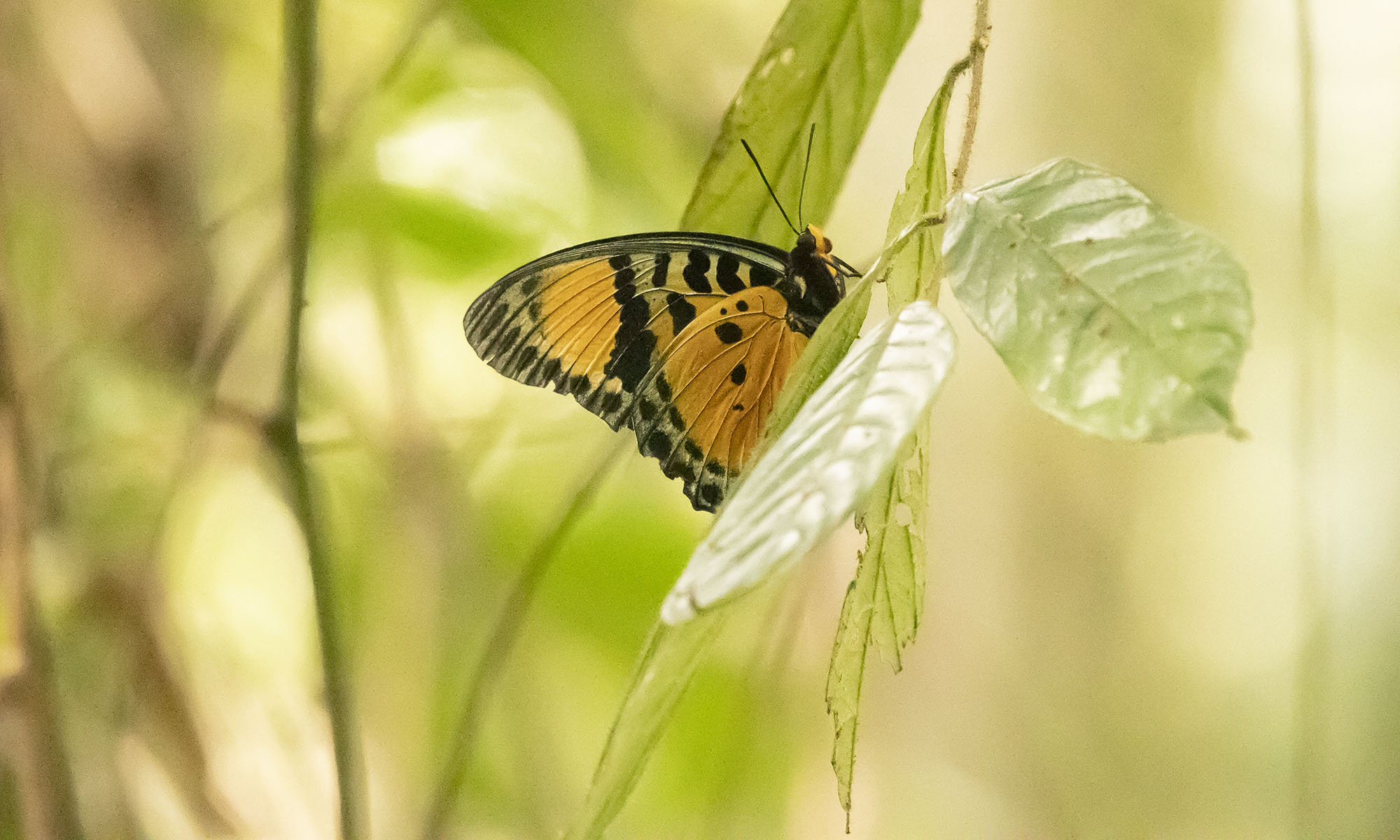Generally speaking, there are two type of lighting: Natural and artificial.
Natural Light
Most of the butterflies are active during the daytime. Natural light typically refers to the sunlight as the direct light source and the ambient reflected light from the environment.
Unless you lure butterflies and set them to the desired position and pose, there is little control over natural light source. Whether you are still consider it eco-photography is up to you. I would say that’s not recommended.
The reflection from the environment can cast a color tint onto the subject. This is usual. In the forest, you will see a green tint. On the sand bank, you will see a yellow tint instead. If you want some more natural color, try to live with the tinted color. If you try to remove tint by custom white balance, the photo may end up with unnatural color. For example, if you remove the green tint from a forest shot, the green leave may turn yellowish because the green tint is removed.
Theoretically, the use of large passive reflector in classical portrait photography also works. However, considering the fact that butterflies do not usually cooperate like the human models, the use of large passive reflector is quite impractical in the field.
Artificial Light
Artificial light typically refers to the pop-up flash or flash guns, but that can also be LED torch or other active artificial light source.
Traditionally, the pop-up flash and the flash guns installed on top of the camera cast the light straightly illuminate the object in the same angle as the lens. The light fills the shadow portion of the subject. As a result, you get a flat and relatively low contrast subject.
Some cameras support off-camera flash. They can trigger the flash remotely so the position and the angle of the flash can be more flexible. Generally speaking, off-camera flash technique gives you the control over the light and shadow.
Balance between Natural and Artificial Light
In field application, artificial light and natural light are applied to the subject simultaneously. You may not be able to control the natural light. However, adjusting camera exposure settings (aperture, shutter speed, and sensitivity) and the flash level allow you to control the proportion between natural and artificial lighting.

